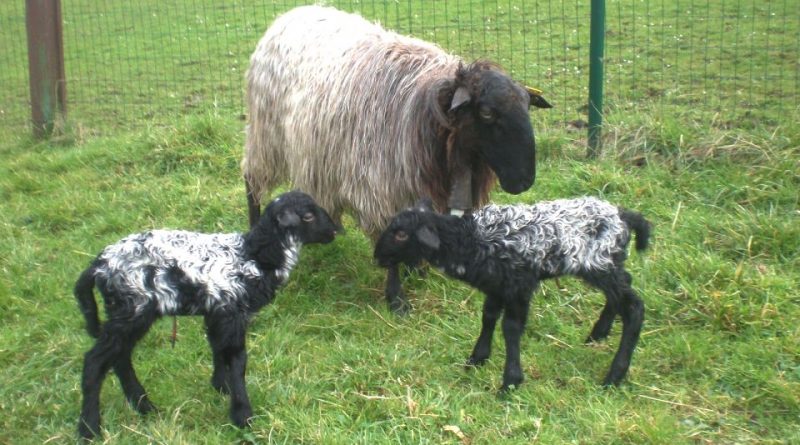Carranzana Negra
Carranzana Negra
The Carranzana negra is a sheep breed (Ovis aries celtiicus Linnaeus, 1758) of Basque origin with an aptitude for milk production.
Systematics –
From a systematic point of view it belongs to:
Eukaryota Domain,
Kingdom Animalia,
Phylum Chordata,
Mammalia class,
Order Artiodactyla,
Suborder Ruminantia,
Bovidae family,
Caprinae subfamily,
Genus Ovis,
O. aries species,
Subspecies O. aries celticus,
Race Carranzana dear negro.
Geographic and Area Distribution –
The Carranzana cara negra is a very ancient Basque sheep breed, which owes its name to the Carranza valley of the same name, in the province of Biscay, where the most important sheep nucleus of this breed is still found today. In particular, the most important nucleus of animals is found in the Carranza valley.
Just over 500 of this breed survive, and a recovery project for the breed is underway.
Origins and History –
The Carranzana cara negra, as mentioned, is a very ancient Basque sheep breed, found mainly in the Carranza valley of the same name, in the province of Biscay, from where it has spread over time to the mountainous areas of Cantabria, Asturias and Leòn. .
Morphology –
The Carranzana cara negra is a sheep that groups specimens with convex profile and long ears, of rather large size, although slightly larger than the true Carranzana, and of elongated proportions.
In the females the horns are not allowed while in the males, when they appear, they acquire great development and adopt the spiral shape. They have a black coloring on the head and extremities.
The fleece is open white in color, formed by pointed wicks with thick and long fibers of different lengths.
The weight of adult animals varies according to the area of exploitation and the management system applied. However, it is possible to estimate between 55 and 65 kg that of sheep and between 80 and 90 kg that of males. In general, they are harmonious animals.
Productive attitude –
The Carranzana cara negra is a very rustic breed accustomed to life in the mountain pastures, in the very green and impervious pastures of Biscay.
These sheep are left free to graze in the wild, guarded only by Basque shepherd dogs.
This breed is grazed on different types of meadows, depending on the time of year to overcome the days of adverse weather or when the needs of the animals have increased (gestation, lactation, etc.).
The diet is integrated with the supply of sheepfold, generally based on hay (grass, alfalfa), beet pulp and concentrates. The importance of this breed lies both in the economy itself, derived from its productions, and in the role it plays in the field of ecology, exploiting natural resources in disadvantaged and mountainous areas, and as a genetic reserve, being animals perfectly adapted to areas with difficult environments and high rainfall. The size of the farm is small, estimating the average number of sheep per flock to be around 30.
The flock is taken to the mountains, at about 800 meters above sea level, from early May to the end of December, to go down to the valley only in the winter months, where it can cope with the harsh climate, give birth and wean the lambs.
With the milk produced by the two daily milkings, in the months from April to August a semi-mature cheese of small size is obtained, with characteristic aromatic scents, due to the great variety of herbs present on the pastures.
The milk production of this breed is highly appreciated, as its main destination is the production of the PDO “Idiazabal” cheese.
The average composition of milk responds to the following data: 6.85% fat and 5.55% protein.
Milk production is around 150 liters in 150 days of lactation. Although the main focus of their breeding is to obtain milk, the breed’s meat production is substantial, with lambs being withdrawn at an early age, close to 25-30 days, slaughtered weighing around 10-12 kg, and marketed in the area.
The average composition of milk responds to the following data: 6.85% fat and 5.55% protein.
Guido Bissanti
Sources-
– Wikipedia, the free encyclopedia.
– Daniele Bigi, Alessio Zanon, 2010. Atlas of native breeds. Cattle, horses, sheep and goats, pigs reared in Italy, Edagricole-New Business Media, Bologna.

